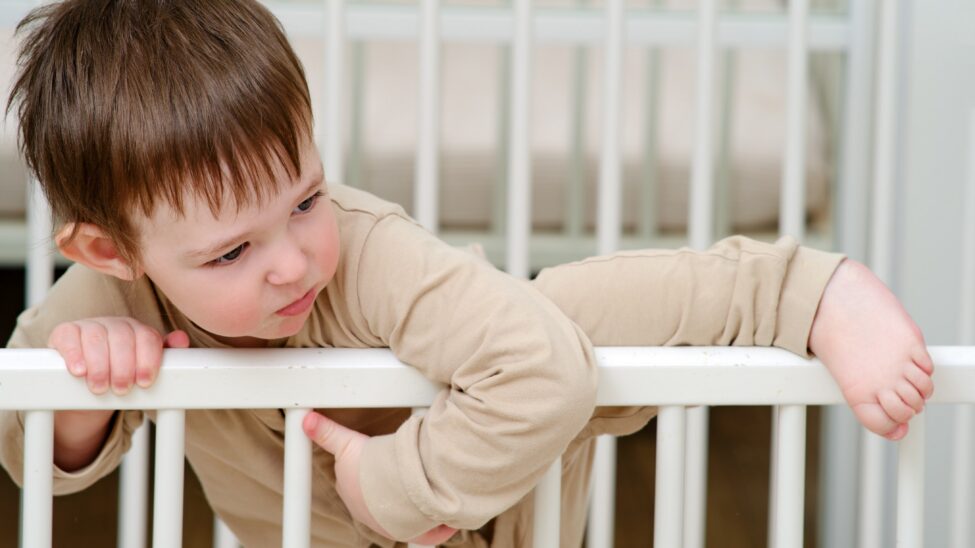
Before You Lay Them Down
I still remember the first night I was ready to put my daughter into her new crib. Everything looked beautiful — clean sheets, soft light, her favorite lovey waiting in the corner. But something tugged at me. I ran my hand along the inside rail and felt it — a tiny splinter I hadn’t noticed. It took me three more minutes to sand it out and wipe it down, but it saved us from a scratched cheek or worse.
Even brand-new cribs need your attention before baby ever lies down. Sometimes the issue isn’t with the crib itself, but how it’s put together or what’s around it. A simple once-over can make all the difference. You don’t need tools or a manual for most of it — just your hands, eyes, and a parent’s instinct.
A crib can look perfect and still pose risks if it’s not properly checked after assembly. Trust your fingers, not just the instruction sheet.
Common Trouble Spots You Can Spot Easily
It’s amazing how many small problems pop up when you slow down and really look. I’ve worked with dozens of families who assumed the crib was fine until something went wrong — a screw came loose, a mattress shifted, or a mobile ended up way too low.
Here’s where I start when doing a crib safety sweep:
- Sturdiness: Give the crib a gentle shake. It shouldn’t wobble or creak.
- Screws and bolts: Run your hand over the joints. Nothing should be loose or sticking out.
- Slat spacing: You shouldn’t be able to fit a soda can between slats — that’s the go-to test.
- Corner posts: These should be flush or very short — anything sticking up more than a few millimeters can catch clothing.
- Drop sides: If the crib has them (some hand-me-downs do), check they’re locked tight. If they’re not, it’s not worth the risk — I always recommend replacing those models.
Don’t worry about checking everything at once. I usually move from top to bottom in one smooth loop, using a dry cloth to wipe as I go — it helps me notice anything rough or loose.
One dad I worked with found a packaging staple half-embedded under the mattress board. It had slipped through assembly unnoticed. That’s the kind of thing we’re trying to catch.
The Little Details That Often Get Missed
I get it — you’ve already spent an hour building the crib, your back hurts, and the baby is due any minute. But this part is worth doing slowly. These are some of the smaller things I’ve seen cause real problems later on:
Mattress fit: There should be no more than two fingers of space between the mattress and the frame. I once visited a home where the mattress looked right but slid half an inch when touched. That gap is enough for a tiny arm or leg to get caught.
Paint chips: Especially with vintage or reused cribs, gently scratch at the rails in a hidden spot. If paint flakes, stop right there. That finish will end up in your baby’s mouth, guaranteed.
Under-crib storage: Baskets and boxes are great — until they press against the mattress base or block ventilation. Make sure anything underneath isn’t touching the crib itself.
Hanging décor: Mobiles, name signs, light garlands — they’re adorable. But if they can swing or fall, they need to be moved. I saw a mobile once drop during a nap, waking the baby in a panic. No one was hurt, but it was terrifying.
A safe crib isn’t about overprotecting — it’s about noticing the things your tired future self might miss.
What Other Parents Shared With Me
I keep a quiet mental list of things families have told me over the years — not to scare, but to remind how easy it is to overlook something. Liza told me she used the crib for three nights before noticing the base wasn’t screwed in evenly. Every time she picked up her son, he rolled toward one side. Anna’s baby got their foot stuck between the mattress and frame because she hadn’t realized the mattress had shifted slightly during sheet changes.
Most of these aren’t disasters — but they’re stress we don’t need. And when your baby sleeps better, so do you. One mom told me she finally relaxed when she realized she’d done everything she could to make the crib safe. That feeling? It’s gold.
You don’t have to fear the crib. Just get to know it, like you would any place your baby spends hours in.
My Last-Minute Ritual Before Every Bedtime
The safest crib isn’t the most expensive one — it’s the one you’ve taken time to understand and care for.
Even now, years later, I still walk around the crib once a day before bedtime. It takes less than a minute. I check that the mattress is flat, the sheets are snug, and nothing new has been placed inside by curious siblings or guests. It’s become part of our rhythm, like turning off the lights or singing a lullaby.
If you make this check a habit, it won’t feel like a chore. It’s just you making sure your baby’s little space is ready to hold them safely — like fluffing your own pillow before sleep.


